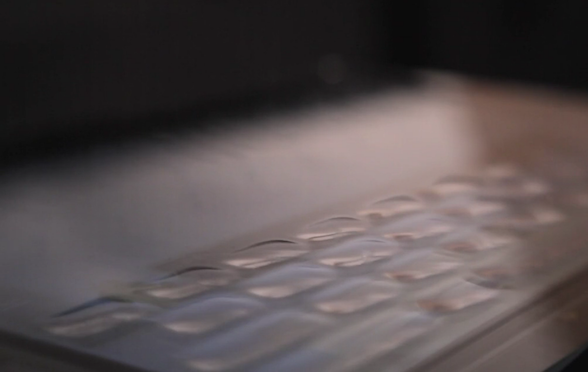
Two years ago, if you had asked me if I preferred typing on a touchscreen over a physical keyboard (BlackBerry-style only, of course), the answer would have been simple. Not a chance. No way. Absolutely not.
My smartphone journey began with BlackBerry. It was a BlackBerry Pearl 8130 (soon followed by a Curve 8330), to be exact, and giving up the physical keyboard has been one of the hardest things to do. I could text and email all day long, only looking down at my phone to navigate and actually send the messages. I could quickly zip through BlackBerry OS with shortcuts and hotkeys that were pre-assigned to specific buttons on the keyboard. I knew every in and out of all the BlackBerrys I owned, and the vast majority of actions hinged on the 40 or so buttons on the face.
And the first few months on touchscreen only device were rough. I couldn't type more than a word or two without stumbling and having to look down, delete some letters and try again. I had to change the way I used smartphones and the way I had gotten used to typing on them.
Fast forward two or so years and I've … changed. I have finally grown used to typing on a hard, unforgiving piece of glass. And I don't have to hear the click of the keys (or even the faux-click on touchscreen phones) and I don't have to feel the click of a button (or fake, cheesy haptic feedback) to feel confident in my typing.
Over the years, software developers' understanding of keyboards and language has vastly improved. Auto-correction helps catch most mistakes (and can sometimes work against you at the most comical times possible). And SwiftKey by TouchType showed us exactly how accurate and impressive word prediction can actually be. Between these two things, I have learned to simply type and trust the software handle the rest.
Sure, there are a few hiccups along the way, and editing text via touchscreen can still be quite frustrating. But the rate of improvement and a video made by a third-party iOS developer, Daniel Hooper, spells a promising future for keyboard software.
I have spent the past two months or better typing articles from tablets, sans keyboard attachments, and have found the experience to be surprisingly pleasing. Even though the cold, hard slab of glass is still a bit alienating and not quite as comfortable to use as the physical chiclet keyboard on my MacBook, I can still type a long-form article with relative ease and very few snags. (Not to mention, the extra soft navigation keys in the iA Writer for iPad app make a huge difference.)
For the first time ever, I can honestly say that I neither need or really want physical keyboards on my phones or tablets anymore. (In fact, today is the first time I popped the Transformer Prime in its keyboard dock in more than two months.) Given the choice, I would take the iPad with a thin yet protective case over the iPad with a keyboard dock/case combination for the lighter weight and footprint.
That said, soft keyboards aren't perfect and could certainly still be improved. How they could be improved, however, is debatable.
One company by the name of Tactus Technology, Inc. believes improvements to soft keyboards can be brought through better hardware. More specifically, they have been developing a type of dynamic display technology that, in the words of CrackBerry's Kevin Michaluk, replaces the "front layer of the display stack". Graphically represented above, the display would raise in certain areas over corresponding keys on a soft keyboard, creating a faux-physical keyboard that doesn't take up any more hardware space than the display itself.
It's an interesting concept, to say the least. About a year ago, I could see myself drooling over such a technology. As a matter of fact, I was. KDDI partnered with Kyocera to create a tactile feedback display that utilizes haptic feedback (vibration) and pressure sensors to simulate the tactile feel of a physical button.
I, however, I feel much more confident in the software approach. I feel as if software advancements could have me typing just as quickly and accurately on a soft keyboard as I do a physical one. And I'm not so sure I want a display that's constantly changing its shape and state, especially if it isn't going to actually feel like a physical keyboard, but just imitate one.
Two weekends ago, I switched back to a BlackBerry Bold 9930, just to get my occasional BlackBerry fix. It wasn't long before I noticed that I wasn't typing noticeably faster on my BlackBerry like I'm used to. It's not that my typing on a BlackBerry has gotten slower, though. I've simply become faster at typing on a touchscreen. With the SwiftKey 3 Beta word prediction and auto-correction software, I can type roughly the same speed on-screen as I could on the physical keyboard of the Bold.
I never imagined I would be so comfortable and at home typing on soft keyboards. But I honestly think I'm finally past physical keyboards and all imitators, haptic and tactile alike. I'll take my keyboards in software form from now on, please!
Image via Vimeo